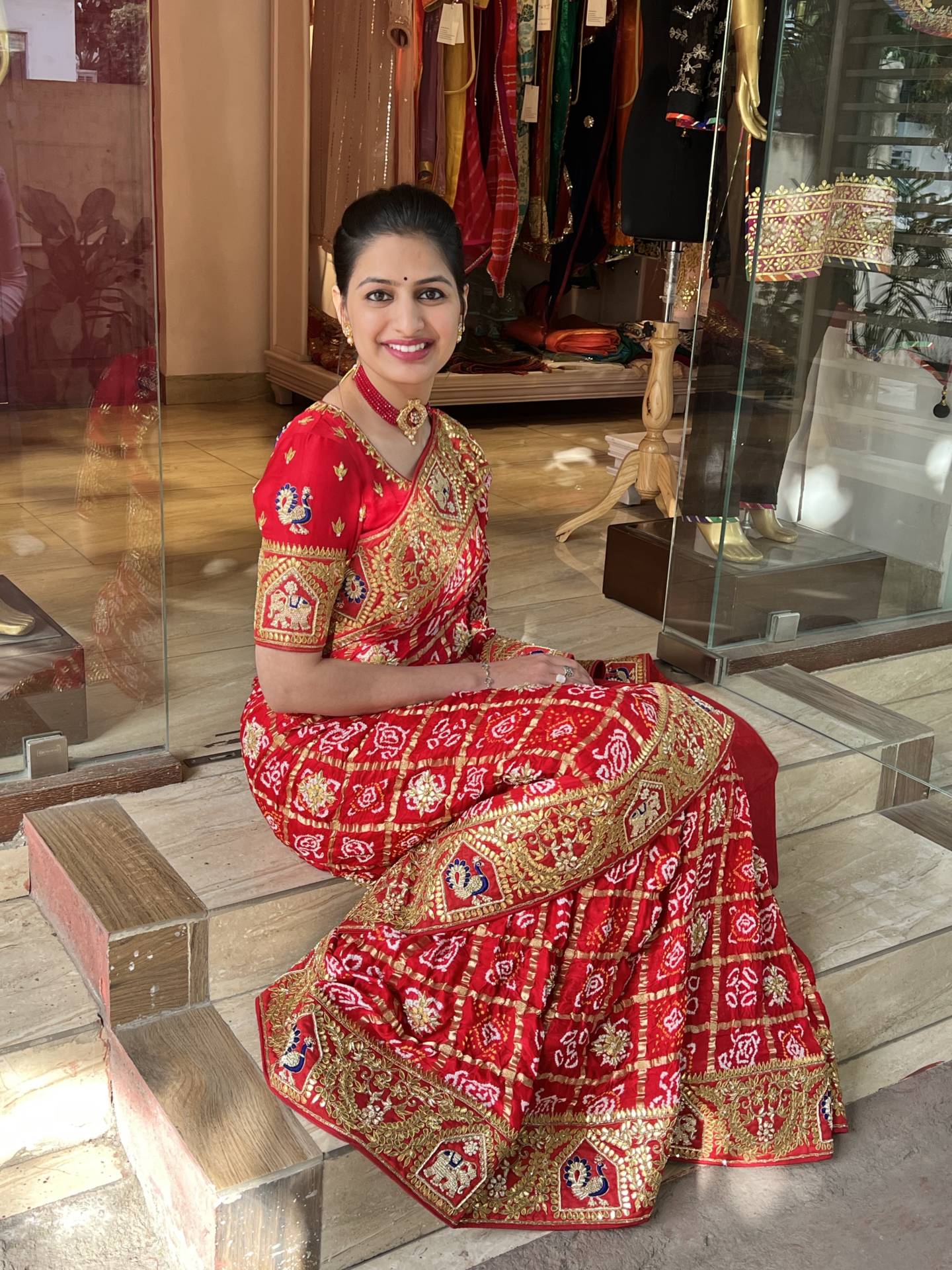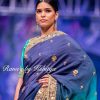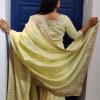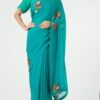
Bandhani – Bandhej – The most authentic, traditional and beautiful style of tie and dye
The term Bandhani is derived from the Sanskrit word banda (“to tie”).
https://www.ranasaree.com/collections/bandhani-bandhej-sarees/
Bandhani is believed to have begun as a traditional form of tie and dye about 5000 years ago and considered to be one of the oldest forms practiced even today. The art of Bandhani involves dyeing the fabric which is tightly tied with a thread at several places. It is a type of tie-dye textile where the fabric is decorated by plucking the cloth with the fingernails into many tiny bindings to create different patterns.
The dyes used earlier were all-natural dyes which were derived from extracts of various plants, flowers, leaves, bark etc. At present various chemical dyes are used for the purpose of dying which has fastened the dying process, enabled more commercial viability as the extract dyes would bleed with sweat and has added a broader spectrum for the range of colors it can be dyed in.
Traditionally Bandhej was generally worn at a wedding or on festive celebrations. With the advancement in the fashion industry and exposure Bandhej is now a popular style of dye being used for suits, lehengas, simple or fancy draped dresses etc. It has become a trend and gained immense popularity by becoming part of the wardrobe for the Bollywood celebrities.
Bandhani work in India was started by the Khatri Community of Gujarat. It is an ancient art practise that is mainly used in the state of Gujarat and Rajasthan. Across India, the base of the fabric used for bandhani is pure georgette, silk, cotton, muslin, wool or other materials. It has social, economic or cultural meaning for people from Gujarat and Rajasthan.
Bandhani sarees are carefully roll-pressed and finished, before they are sold. Similar process needs to be followed by the wearer. Each Bandhani saree must be steam ironed to maintain its quality, texture and color. If worn well you would not need to get them cleaned very often, a regular roll press will maintain it well. But whenever you need to clean it, it has to be Dry Cleaned Only (petrol washed) else it will lose its colour, shine and the bandhej would also get damaged.
The art of Bandhani is a highly skilled process. Dying is done by hand and hence best colours and combinations are possible. The method of dyeing is that the fabric is tied into a design, is in which coloured patterns are produced in the fabric by gathering many small portions of material and tying them tightly with string before immersing the cloth in the dyebath. This technique of dyeing a fabric which is tied tightly with a thread at several points helps produce a variety of patterns like Chandrakala, Bavan Baug, Shikari; depending on the way the cloth is tied.
A meter length of cloth can have thousands of tiny knots known as “Bheendi” in the local language of Gujarat also common called Dots or Boond. These knots form a design once opened after dyeing in bright colours look beautiful. Traditionally, the final products can be classified into “khombhi”, “Ghar Chola”, “Chandrakhani”, “Shikari”, “Chowkidaar”, “Ambadaal” and other categories.
Bandhani tying is often a family trade, and the women of these families work at home to tie patterns. Pethapur, Mandavi, Bhuj, Anjar, Jetpur, Jamnagar, Rajkot, are some of the main towns in Gujarat, where Bandhani is created. The cities of Bhuj, Jamnagar and Sikar (Rajasthan) are well known for their different Bandhanis. Dyeing process of Bandhani is carried out extensively in these cities.
Bandhani especially the red or maroon colored Hozariya (multi colored bindings) is considered to be the most auspicious saree for the Bride or any worshipping lady. Red is the most popular color in Bandhani because it is symbolic for a married women, considered auspicious, is bright and is an attractive color. Compliments the Indian complexion, style of dressing and ornaments too.
So to sum it up, given the history, presence, popularity and beauty of the art a Bandhej Saree is MUST BUY for all women. Compliments guaranteed!




